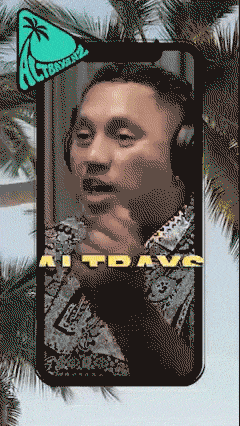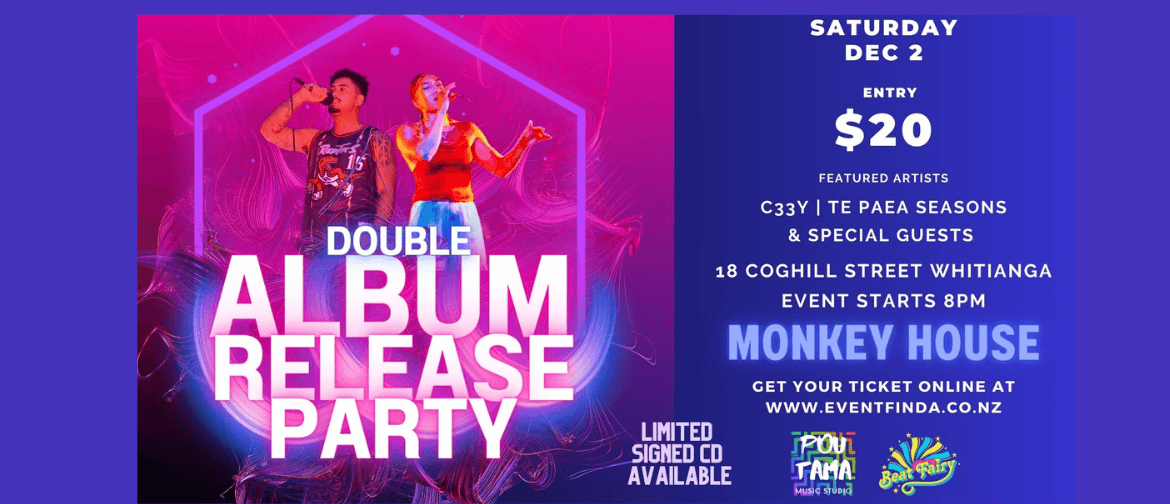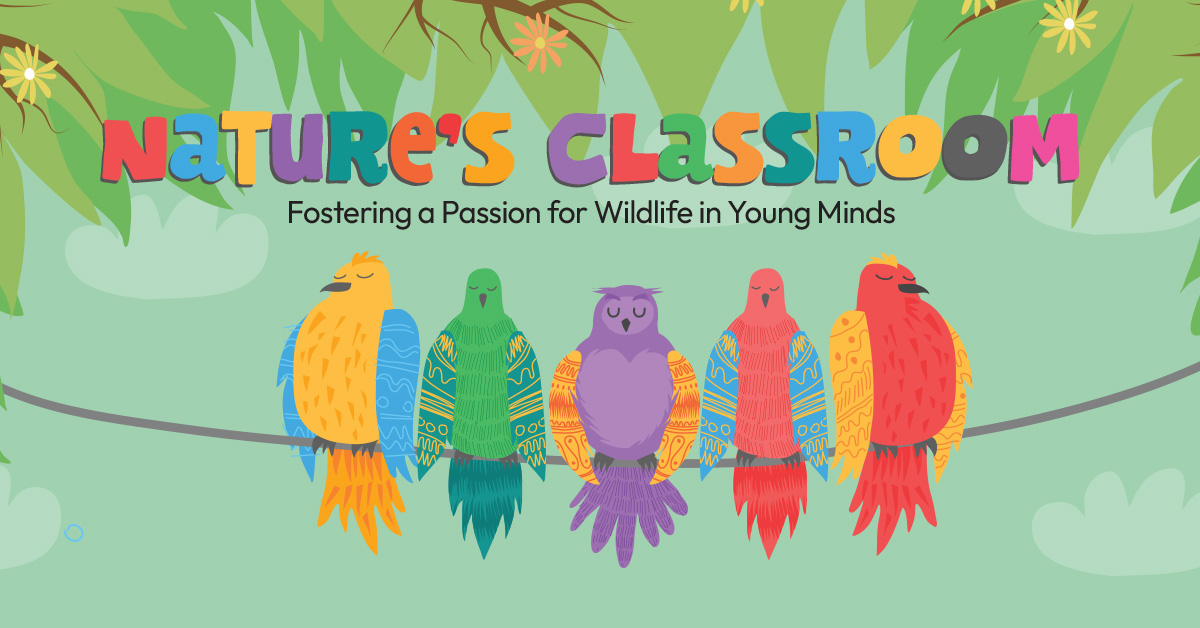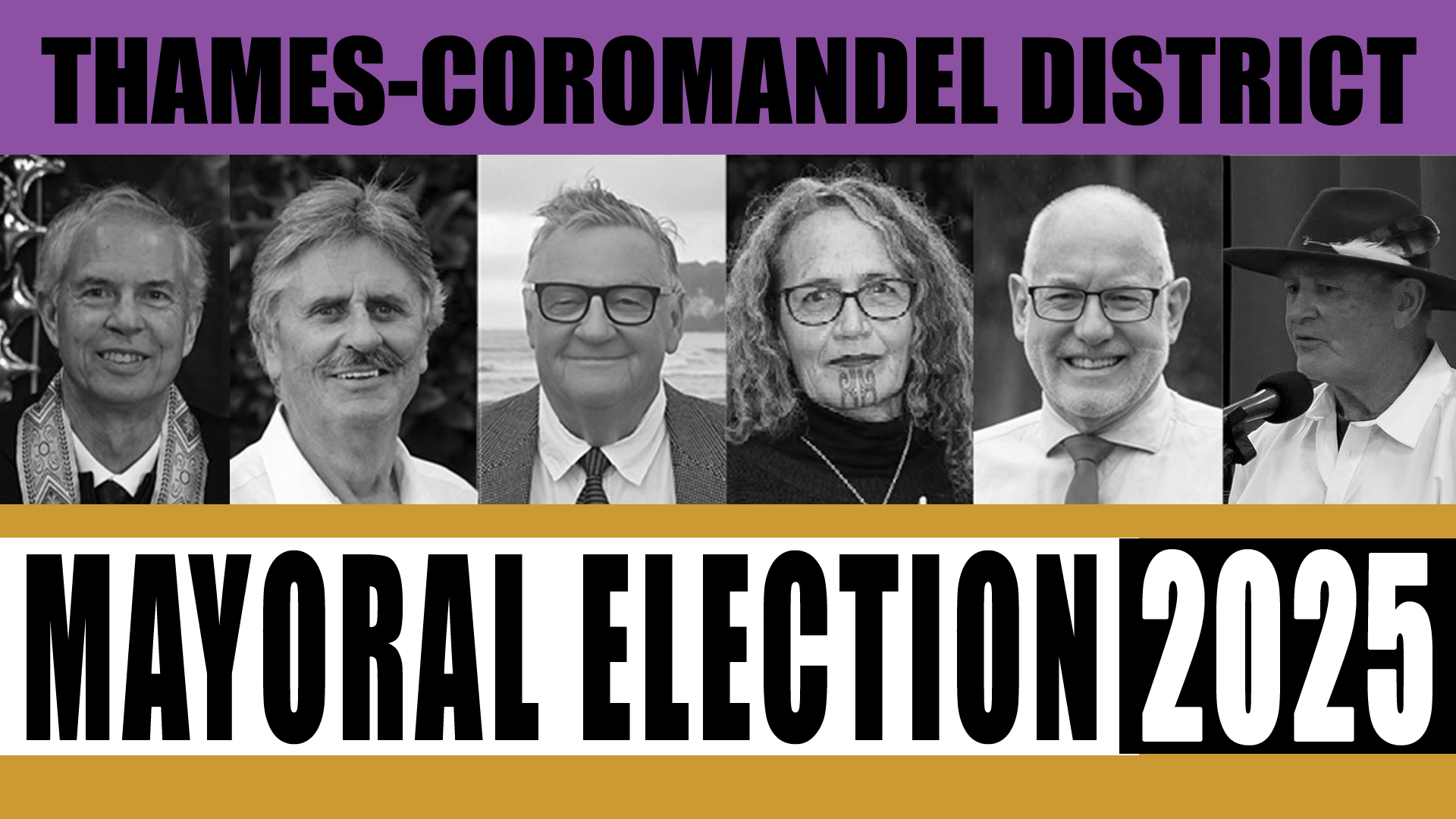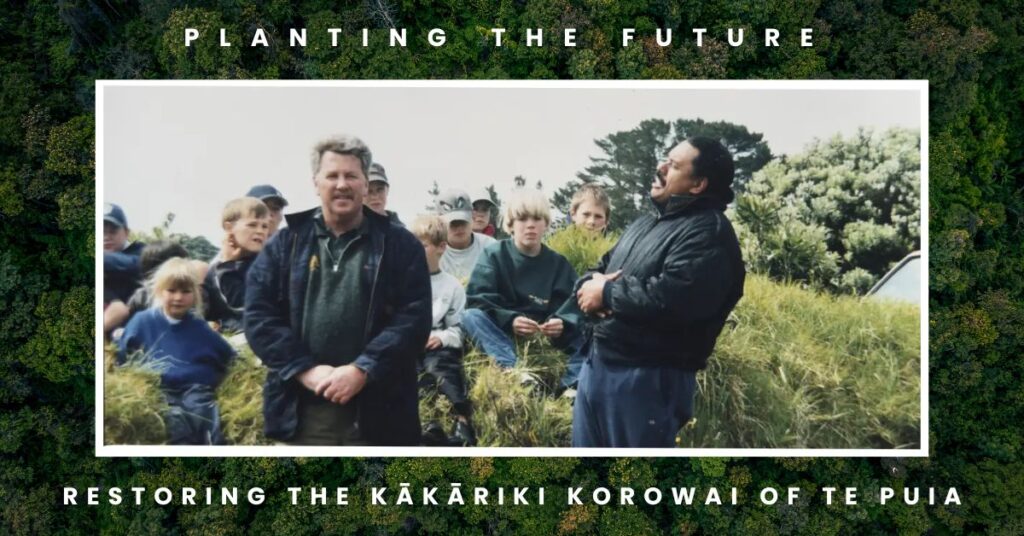
A Legacy of Environmental Restoration and Whakapapa
Continuing from my introductory story of my arrival at Te Puia (Hot Water Beach) in 1964, I will explore the reasons why I became so passionate about restoring the biodiversity of the enchanted Te Puia Pa site.
Going back to the early 1950s and the start of my education journey at Bayswater Primary School on Auckland’s North Shore, I met my all-time favourite teacher, Miss Kapa. Miss Kapa taught us waiata Māori, stick games, and our times tables by chanting over and over together, standing and clapping. She swayed and smiled as she led the chants in front of us. It was 1958 when she enthralled us again with stories about Richard St. Barbe Baker, who founded the Men of Trees Society in 1922.
He was an explorer, forester, and inspirational leader who was in New Zealand as a keynote speaker at the inaugural meeting of the Men of Trees Society of Southland on the 17th of May 1958.
He visited our school, and two members of our class were selected to go with him to plant acorns (English Oak) in the corner of our rugby field. I was selected along with the late Sir Peter Blake (who was tragically killed by pirates aboard his vessel Seamaster at the mouth of the Amazon River on December 5th, 2001). The oak trees are still there and mark the time I heard Richard St. Barbe Baker’s desperate call to action: “We have to plant forests for our lives.” His call has resulted in millions of trees being planted around the world. My small part in ngahere (forest) restoration has been through planting projects and helping establish nurseries around the North Island.

Nearly 30 years ago, the opportunity came up—as a member of the HWB Reserve Management Committee—to do something here at Te Puia (Hot Water Beach). There have been many members of the committee over the years. Back then, it was Anne Elliot, the late Gordon Pye, his son Graham Pye (founder of Te Puia Nursery), the late Paul Butler, the late Joe Nelms, and myself. We worked alongside TCDC to enhance and manage our reserves at Te Puia.
Our annual budget was $5000 and was usually allocated to picnic tables, rubbish bins, signage, and memorial seats—seemingly mundane things—but we all became familiar with the boundaries of our recreational reserves. Surprisingly, we also became aware that Te Puia Pa was listed as a “Road Domain” and not a “Historic Reserve.” Backed by the consistent efforts of conservationist Anne Elliot, we began planting programmes on the reserves at Te Puia (Hot Water Beach). Graham Pye supplied good quality, eco-sourced plants at cost from his local nursery. His father, Gordon, brought his scout group out, and together we planted the Taiwawe Stream banks. The planting now shelters the walkway to the Top Ten Holiday Park. Gordon also started planting pōhutukawa on the seaward side of Te Puia Pa.
The existing pōhutukawa were being ravaged by possums. Anne’s husband began trapping and poisoning them, and local resident Adam Clow is now leading this work under the umbrella of the Purangi Conservation Trust. We shifted from bins and signs to spending our entire annual budget on trees and trapping.
Ngāti Hei have been actively involved since the start, as it is, of course, their rohe. The late Peter Tiki Johnson and Joe Davis came out and walked around the site, pointing out remnants of ancient defensive trenches and whare. These areas were to be left unplanted so future generations could explore and see these earthworks. Joe attended our HWB Reserve Management Committee meetings when his workload allowed. His knowledge and kōrero motivated us to increase our restoration efforts.
We started organising annual Arbor Day plantings on the 5th of June, which he attended and always opened with a whakanoa at dawn. When the volunteers arrived, there was karakia followed by kōrero on the significance of the site and the work to restore it. He closed the event with poroporoaki. For many of the local school children who attended these plantings, this was their first experience of tikanga and te ao Māori. The poroporoaki was to return the site to its tapu status. For me, I had experienced and seen evidence of past battles that needed the tapu or protection.
In April 1982, Tropical Cyclone Bernie took its toll on Te Puia, flooding the area now occupied by the Top Ten Holiday Park, through the original Hot Water Beach motor camp (which is now beachfront housing), and right across the camper van parking before the one-way bridge—which we called “the bull paddock” back then.
Huge seas, combined with the rushing river, gouged the sand dunes on the far side of the Taiwawe Stream at the foot of Te Puia Pa, creating huge sand cliffs 8 to 10 metres high. As the floodwaters receded, I walked with Gordon Pye along the bottom edge of these new cliffs and discovered skeletons entombed in the sand. On recent reserve maps, the area is marked as urupā. “Legislation has given urupā reservations a special status in legal terms, as well as having family, spiritual, cultural, and historical importance.”
The bones looked ancient and were most likely relics from Ngāpuhi incursions into the area around 1817 to 1820. The sand cliffs began to collapse, and within days, the skeletons were reburied. It seemed appropriate that the sand rapidly re-entombed them away from prying eyes and “curio” collectors.
The image has stayed clear in my mind to this day. There are many other individual stories relating to that particular area—this is just one of my experiences.
You will notice that I have referred to many individuals in this piece as “the late”—that is to honour those who have passed away as I continue my journey. Another avid supporter was the late Duce Pohatu, who brought Te Kura o Te Whanganui o Hei students to a planting where the heavens opened and the rain fell in icy torrents… that story will continue another day…
Ngā mihi nui
Words by Howard Saunders
Coromind: Coromandel’s Collaborative Magazine

Help us take Coromind Magazine to new heights by becoming a member. Click here
Change the Weather for Your Business: Advertise with Us.
Advertise your business in the whole Hauraki Coromandel in the coolest Coromandel Art Magazine, from Waihi Beach/Paeroa /Thames up to the Great Barrier Island.
Advertise Smarter, Not Harder: Get in Touch


